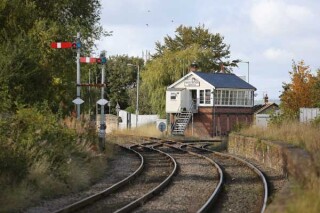
The new funding includes £760m for the next phase of East West Rail to reinstate direct rail services between Bicester and Bletchley for the first time since 1968.
It also includes £34m to progress plans to reopen the Northumberland line between Newcastle-upon-Tyne and Ashington, which closed to passengers in 1964 as part of the Beeching cuts.
The works between Bicester and Bletchley in this phase of the project (Western Section Phase 2) will include the construction of a new stations at Winslow, as well as enhancements to existing stations along the route, including Bletchley. By 2025, two trains per hour will run between Oxford and Milton Keynes via Bletchley, the Department for Transport said.
Simon Blanchflower, chief executive of the East West Railway Company, said: “This funding will enable us to get on with the construction work that will connect communities who live on the East West Rail link. We are committed to improving connectivity across the Oxford-Cambridge arc, and fully recognise our responsibility to ensure that it is delivered in a way that minimises disruption, supports the regional economy, maximises benefits and supports jobs across the region.”
The first section of the East West Rail, between Oxford and Bicester (Western Section Phase 1), was completed in December 2016 and saw an upgrade of the existing rail line between Oxford and Bicester to facilitate future East West Rail services. It also involved building a new 1km section of railway to connect the former Bicester Town station (now Bicester Village station) to Oxford via the Chiltern main line, enabling a new Chiltern Railways service between Oxford and London. Phase 1 was delivered by Network Rail, Chiltern Railways, and a joint venture led by Carillion and Buckingham Group.
![East West Rail will eventually connect Oxford and Cambridge [click on image to enarge] East West Rail will eventually connect Oxford and Cambridge [click on image to enarge]](https://www.theconstructionindex.co.uk/img-cache/ba297c91b4d7e213f017ada6971b75ef/320x141.77777777778_1611562023_east-west-rail-map.png)
In Northumberland, there will be new stations at Ashington, Bedlington, Blyth Bebside, Newsham, Seaton Delaval and Northumberland Park in North Tyneside, as well as upgrades to the track and changes to level crossings where bridges or underpasses may need to be built.
The Treasury sign-off immediately releases £34m towards the final cost of £166m with further funding to follow once design works are completed. It will fund land acquisition, completion of detailed design and for Network Rail to commence early works ahead of the relevant planning approvals.
Northumberland County Council leader Glen Sanderson said: “This is absolutely fantastic news, and means we can now finalise our plans to deliver this transformational project for both Northumberland and the wider region. The Northumberland line will bring a huge boost to the area in terms of economic growth, housing, employment and education opportunities, as well as providing a fast and efficient new transport link between the south-east of the county and Tyneside.”

Transport secretary Grant Shapps said: “Restoring railways helps put communities back on the map, and this investment forms part of our nationwide effort to build back vital connections and unlock access to jobs, education and housing.”
